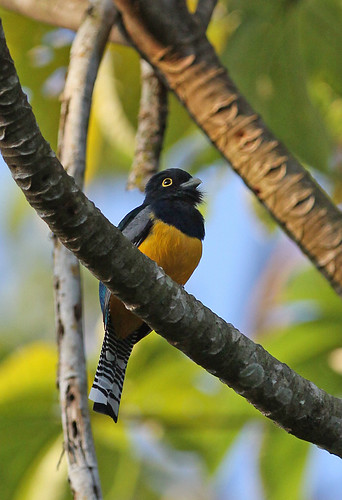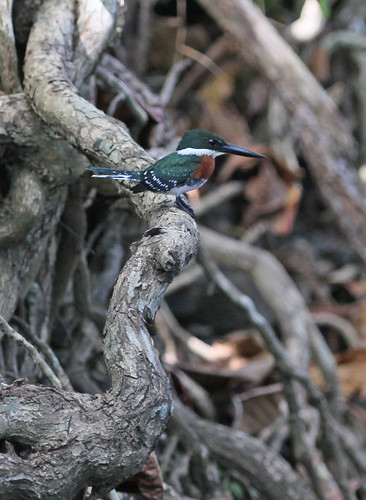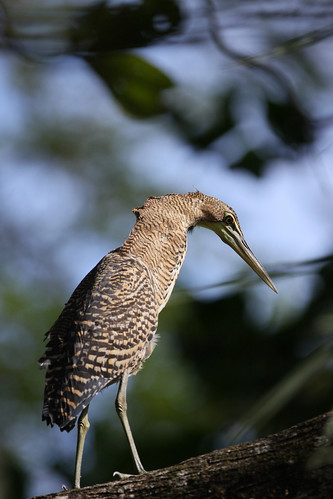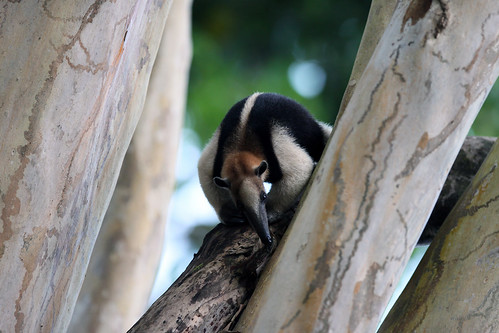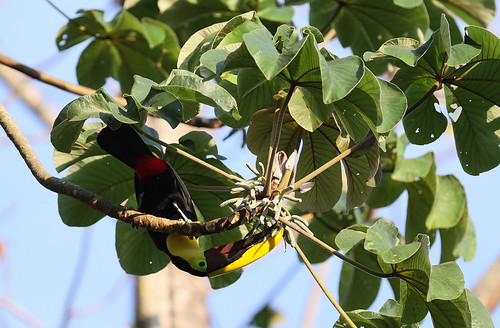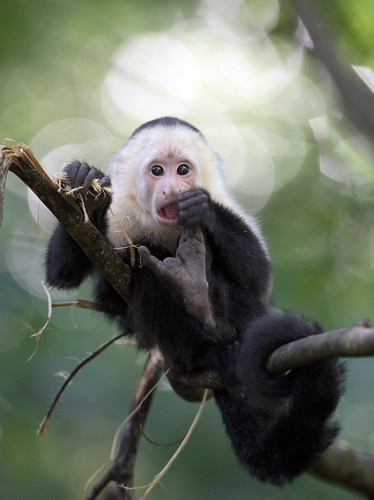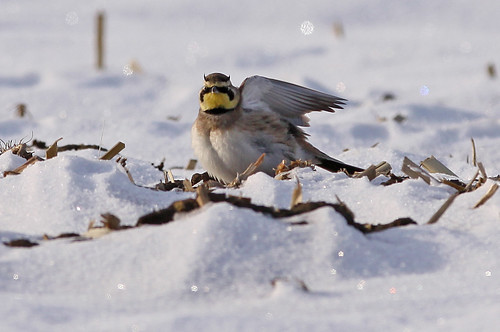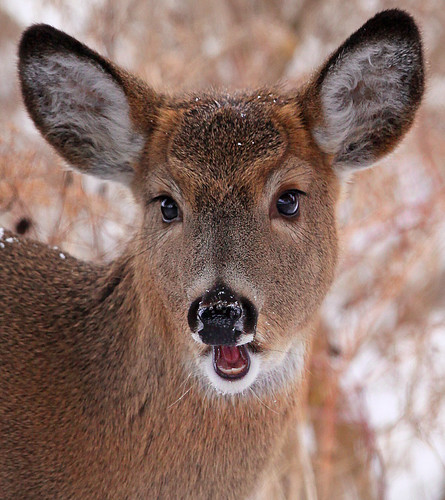The local birders call these "Flying Chickens"
Friday, January 29, 2010
Green Kingfisher



This guy proved to be quite elusive as most kingfishers are, but success was had after too many failures by approaching from a newer angle. Interesting note, he didn't chatter at all when fleeing, but I did hear him once in the distance.
The Green Kingfisher is smaller than the Belted Kingfisher and lacks the large white spot in the wing and in front of the eye.
Interestingly, the males have a chestnut breast band, not the female.
Blue-crowned Motmot


The Blue-crowned Motmot is one of my favorite birds found in Costa Rica. As with the Pygmy Owl, it has an easy call to replicate. They have a confiding nature and call with a soft double hoot "woop-woop'. This guy was perching right under our nose as we stopped and scanned an area we thought might be a good haven for motmots. As we sat there waiting for something to happen, for quite a while I may add, a glimpse of color finally caught my eye. Less than 10 feet away, 2 motmots perched on a low branch stared at us. We took hundreds of photos as one of them sat for the whole session. Unusually, seeing motmots during the day is a treat. We were lucky enough to have 2 of them in nice lighting! What a striking bird! For fine details, click on photo for large view!
Thursday, January 28, 2010
Bare-throated Tiger Heron
A hint of this bird at a location was given by our bird guide one morning, and wouldn't you know, he was at that spot the next morning. I took some shots while on a walk and ventured on. What I didn't know the next morning, was that he was fishing there again, but upstream quite a ways. This location wasn't revealed until I accidently flushed him, while looking for a Green Kingfisher. This juvy actually flew into a better position for this photographer. Now that never happens, but this is the proof! What an interesting pattern!

You can see the "bare-throat" if you click the photo above!

Wednesday, January 27, 2010
Ferruginous Pygmy Owl

A tiny owl of about 6 inches, they are a favorite of mine to find, though quite difficult to spot given their size. The call is easy to replicate and often gets answered. We found 3 on this trip which was quite the highlight, because in the previous trip, I could only manage a butt-shot that was worth keeping.
If you can imagine a baseball hidden in a tree, that is about the size of this guy without the tail. In this shot, it looks as though he is roosting in a branch a few feet from me and the shot is basically eye to eye, but in fact this is an overhead vertical shot, and the pygmy is looking down at me. My neck hurt alot on this trip, but I cannot complain!
Click the photo for a look at a jumbo sized pygmy owl! And...depending on your monitor, it is close to actual size!
Tuesday, January 26, 2010
White-fronted Parrots


This White-fronted Parrot was a very interesting flyer. Not only are they a loud and obnoxious bird, the flight of these distinct birds was odd. Their wing beats are short and rapid.
Cool Facts: The White-fronted Amazon, Amazona albifrons, also known as the White-fronted Parrot, or adopted slang term Spectacled Amazon Parrot is a Central American species of parrot. They can imitate a range from 30 to 40 different sounds. Like other large parrots, the White-fronted Parrot has a long potential life span, usually around 40 years.The White-fronted Amazon, at about 25 cm (10 in) long, is among the smallest of the Amazon parrots. This species is named for the bright white patch of feathers on their foreheads, although the amount of white varies from individual to individual. They have mostly green plumage with some blue coloring on their outspread wings. They have bright red coloring around their eyes (in some individuals almost like spectacles) and blue coloring behind the patch of white on their foreheads. We were lucky enough to see them twice!
Monday, January 25, 2010
Tamandua Anteater
This anteater was spotted on our first morning in Costa Rica way up high in the canopy at dawn while waiting for our morning bird walk to begin. 
He worked his way down...
...to a tree directly in front of us...
..and we admired his interesting colors! I never knew just how cool his coat was!
I found his size to be quite a bit smaller than expected. I would gauge him at a about the size of a stout medium sized dog with a very long tail.
Interesting Facts: South American anteaters have long noses, long sticky tongues, and strong sharp claws, but they do not have any teeth. The largest species is the giant anteater, or ant bear. While normally not aggressive, these animals can be quite dangerous due to their size and sharp claws; in 2006, a female zookeeper was attacked and killed by an adult giant anteater.
Oh, and don't forget to click on the photos for a detailed view!
Friday, January 22, 2010
Chestnut-mandibled Toucan
The largest of the toucans to be found in Costa Rica, I loved seeing these guys every time, without getting bored. Who could with such interesting features? They were tough to find, but we managed to almost every day. Interestingly, their call is very muted, so we solely relied on sight to spot them.
Interestingly, the toucan eats fruits and berries just like Toucan Sam of Fruit Loops cereal fame, but will steal eggs and nestlings from the nests of the endangered Scarlet Macaw!

Their long bill allows them to perch on heavier, stable branches and reach a distance for hanging fruits. They snip the fruit off, hold it at the tip of the bill, and then, with a forward flip of the head, toss the fruit into the air and into their throats.

Small fruit seeds pass unharmed through toucan digestive tracts and large seeds are regurgitated, also unharmed. Thus, these frugivores aid in the dispersal of tree seeds, and, together with other fruit-eaters, are responsible for the positions of some forest trees.

This last one is a Fiery-billed Aracari. It is much smaller than the toucan and has a serrated bill. He was a very cool bird to see with it's awesome colors! We didn't have the pleasure of seeing this guy but twice, and was very lucky to get the photos we did, as they scare very easily, and are spotted high up in the canopy in most cases.
I was thrilled with the luck we did have!

Click on photos to see better detail!
Thursday, January 21, 2010
Capuchin Monkey




These last 2 images were a bit of a trainwreck, but I posted them anyway. At some point during the morning shoot, the camera mode setting got switched to manual. Of course, in all of the excitement, I shot first, looked later, discovering way too late, after about 100 images, that the whole shoot was a disaster. Well I salvaged what I could, and here they are. I couldn't throw away these, as the baby on the mothers back was the only time we saw them the whole week. Also, this was the closest encounter of the week, as luck would have it...Doh! 

Wednesday, January 20, 2010
Scarlet Macaw
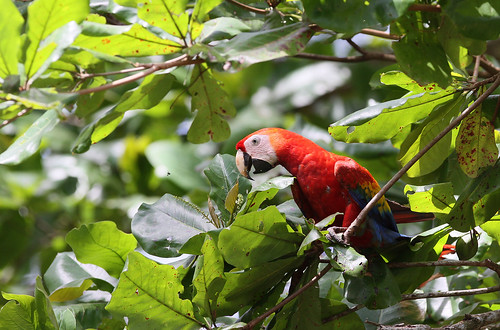
Scarlet Macaw, originally uploaded by Hannibals Animals.
This image above is my favorite!

The colors on this large animal are so vibrant!

Getting close to these guys wasn't easy. I used plenty of stealth and failed many times, but determination does eventually pay off!

Finding them is pretty easy. They are extremely noisy!

Catching them in flight took lots of tries. I got lucky with this close distance.

Tomorrow...Capuchin Monkeys!
Also, don't forget to click on any photo to see them larger!
Thursday, January 7, 2010
Horned Lark
This Devilish Character is waving goodbye to you all, as I am off to Costa Rica for a week of birding, beaching and who knows! I hope to bring back plenty of exotic photos to share with you all! I will post and catch up on commenting when I get back! (but it might take a little while to go through it all) Pura Vida!
Wednesday, January 6, 2010
Ring-necked Pheasant Hen
Found this forager picking soybeans with the sun about an hour from setting. I love the golden hours!
Tuesday, January 5, 2010
Nice Rack!
A friendly buck let me take his picture for quite some time...I was able to make some changes after shooting 20-30 frames. He let me take off my doubler because he was too close, change apertures after needing a bit more DOF, stabilize my lens on my partners shoulder after fatiquing... I think I could even have changed a tire if I needed to. Thanks Buck!
Monday, January 4, 2010
Making Faces
This late season fawn made quite the impression on me with all of the cute faces it made while foraging through the snow. It was just a few yards from me and stayed there long after the photo shoot was over.

Shutter timing is everything, and with alot of luck, capturing the tongue for the "cute" shot was what I was after.

Getting close-ups of this deers long eyelashes was the focus here, along with a nice catchlight in the eye.

Click on this last photo for an extreme close-up of the eyes!


